Rosetta Stone
When people outside of Egypt discovered the large amount of picture writing called ‘hieroglyphs’, they spent years trying to figure out what the ancient Egyptians were saying.
Many professionals devoted almost their entire lives to making an attempt at translation.
Try as they might, they just couldn’t decipher it. It wasn’t until the Rosetta Stone was found, that they had a way to hear the messages of the ancient Egyptians.
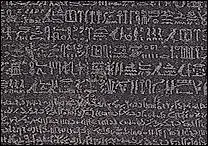
The Rosetta Stone was actually found by Pierre-François Bouchard (1771–1822) one of the soldiers in Napoleon’s army in 1799.
Napoleon was fascinated with ancient Egypt and spent a lot of time there with plans to rebuild a fort.
While they were digging around in some of the foundations at a town called el-Rashid (which means Rosetta) the found the stone which has two different languages: hieroglyphic and Greek and using three different types of script.
The third script was demotic, which was commonly used in Egypt. When the British defeated Napoleon, the stone became the property of the British and was taken to England and then to the British Museum.
Thomas Young
An English physicist named Thomas Young (1773–1829) figured out that some of the hieroglyphs sounded like a royal name.
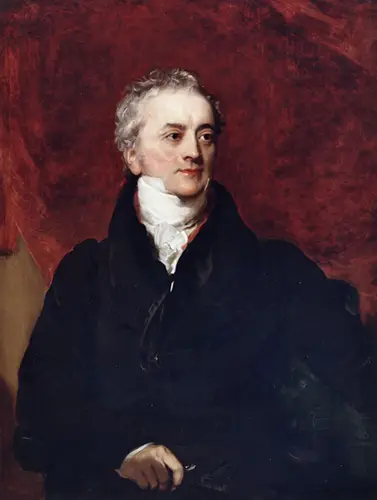
Jean-Francois Champollion
It wasn’t until a French Scholar, by the name of Jean-Francois Champollion (1790–1832) took interest that he realized this was the same message in two languages.
Jean-Francois knew both Greek and Coptic writings, and spent a long time trying to match the pieces together so that they would make sense.
He translated seven of the Coptic signs and then traced these back to the demotic and then hieroglyphic signs.
Using this kind of backtracking method he announced in 1822 that he had translated some of the Rosetta Stone and began working on making educated guesses for the rest.
He had managed to translate two of the names of the pharaohs: Ramesses and Thutmose.
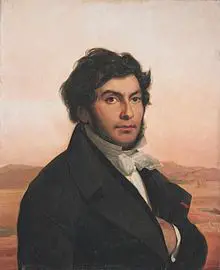
Black Granite
The stone is a piece of black granite that was used to announce a new divine cult that was established by one of the pharaohs and includes a list of all of the good things the pharaoh had done for Egypt.
Since the stone was in Greek, with matching hieroglyphs, they translated the date to be March 27, 196 BC.
The problem with the stone is that it was just a fragment of the original and much of the hieroglyphic portion had been lost and the ‘sentences’ cut off on both the right and the left sides.
There were enough Greek words, but they had to try to match each language and it was a bit difficult.
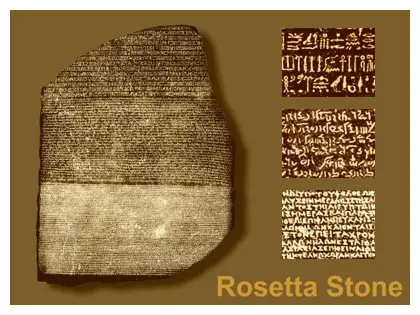

Translation
The discovery of some of the translations were shared with many professionals as they began to work on translating other Egyptian hieroglyphs.
Copies of the stone’s message were shared with specialists all over the world.
The problem that many had with the stone is that it was written by the Egyptian temple priests and included religious meanings that they were not familiar with.

Once scholars had translated more of the writing on the stone, they used it as a basis to work on other Egyptian hieroglyphs.
The Rosetta Stone became the ‘key’ to unlocking the door to the messages and writings found in so many areas of Egypt.
From that point on, everyone began understanding the hieroglyphs and realized how incredibly smart the ancient Egyptians were.
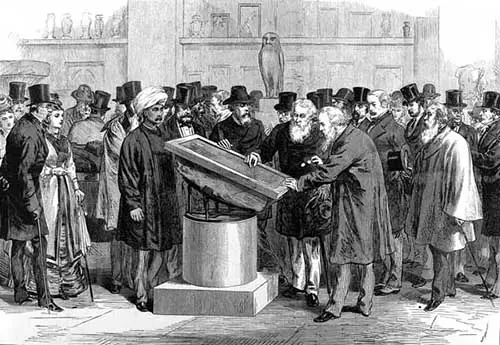
Where is the Rosetta Stone
The Rosetta Stone is in the British Museum in London England. It was shipped to England in 1802 and in the same year King George presented it to the Museum.
It has become one of the most visited exhibits in the British Museum and is considered to be one of the most important objects.
In 2003, Egyptologists began going around the world to make special requests of the various countries to return some of the Egyptian antiquities that had been taken over the years.
Both the British and French museums held many of the Egyptian treasures.
In 2005, the British Museum presented Egypt with an exact replica of the Rosetta Stone and it is displayed at the Rashid National Museum, very close to the original location where the stone was found.
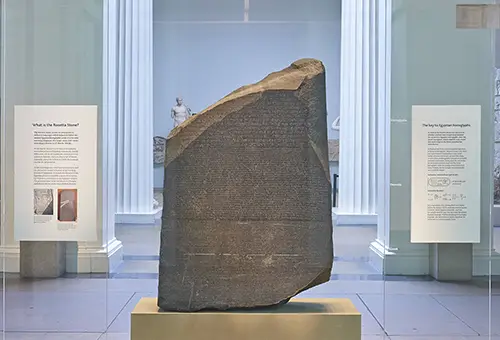
Facts about the Rosetta Stone
- The Rosetta Stone was found broken and incomplete in 1799.
- Pierre-François Bouchard (1771–1822),who was an officer Napoleon’s army realised the importance of the discovery.
- The stone was shipped to England in February 1802 after Napoleon’s defeat.
- Thomas Young (English physicist) figured out that some of the hieroglyphs sounded like a royal name.
- It took Jean-François Champollion (1790–1832) more than two decades to decipher it.
- Jean-François Champollion realised that hieroglyphs recorded the sound of the Egyptian language.
- The writing on the Stone is an official message, called a decree, about the king (Ptolemy V, r. 204–181 BC).
- According to the inscription on the Stone, an identical copy of the declaration was to be placed in every sizeable temple across Egypt.
- In 1917 towards the end of the First World War due to heavy bombing it was moved to an underground Tube station for safe keeping.



